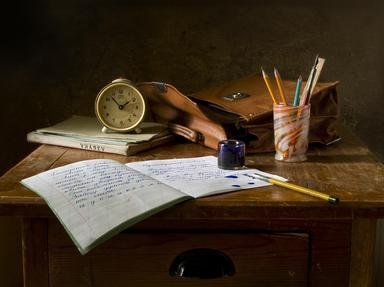Quiz Answer Key and Fun Facts
1. The etymology of the word cauldron can to traced back to the Vulgar Latin meaning for which of the following?
2. Though we seldom see cauldrons much in use in the culinary field in western societies today, with which literary creations are they still usually associated?
3. What were the Irish leprechauns said to keep hidden in cauldrons?
4. Welsh mythology associates the cauldron with an enchantress known as Ceridwen. Which of the literary arts is her forte?
5. The rather ghastly triptych, "The Garden of Earthly Delights" by Hieronymus Bosch, features the Prince of Hell in the centre panel - along with a cauldron. In what way are they associated?
6. For what was an execution cauldron used?
7. Another Welsh legend has cauldrons associated with armies engaged in battle. For what was it used?
8. The modern pagan practice of Wicca still uses cauldrons in its rituals. Not only does it represent a particular goddess, but also which part of the female anatomy?
9. In which country was the famous Gundestrup cauldron located in 1891?
10. What famous athletic event is associated with a cauldron?
Source: Author
Creedy
This quiz was reviewed by FunTrivia editor
agony before going online.
Any errors found in FunTrivia content are routinely corrected through our feedback system.

